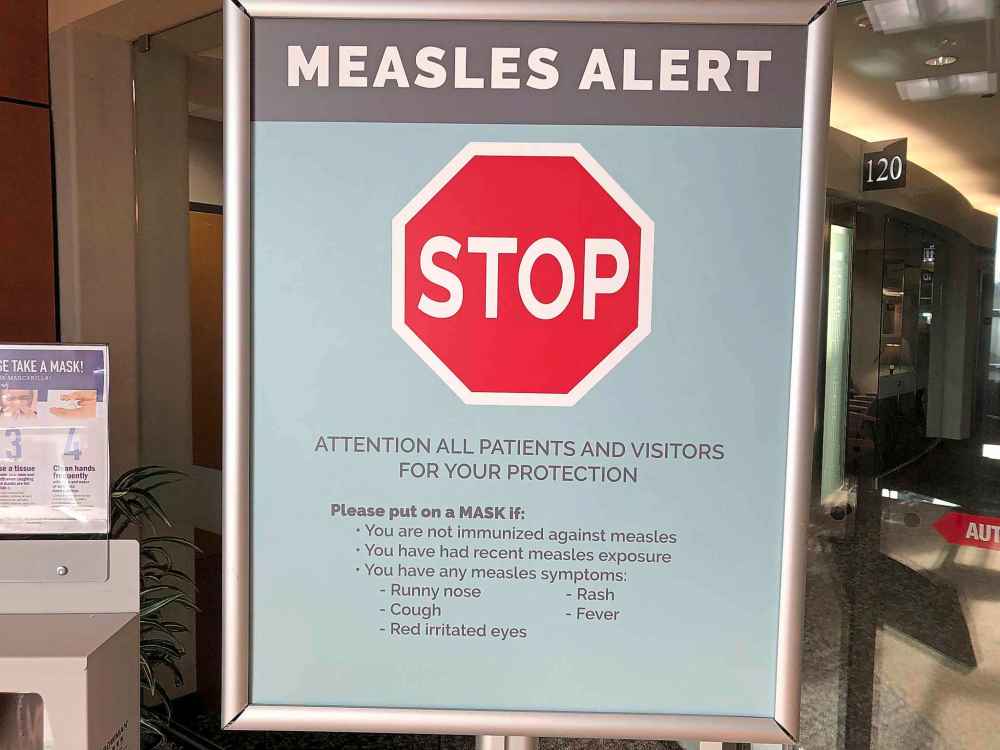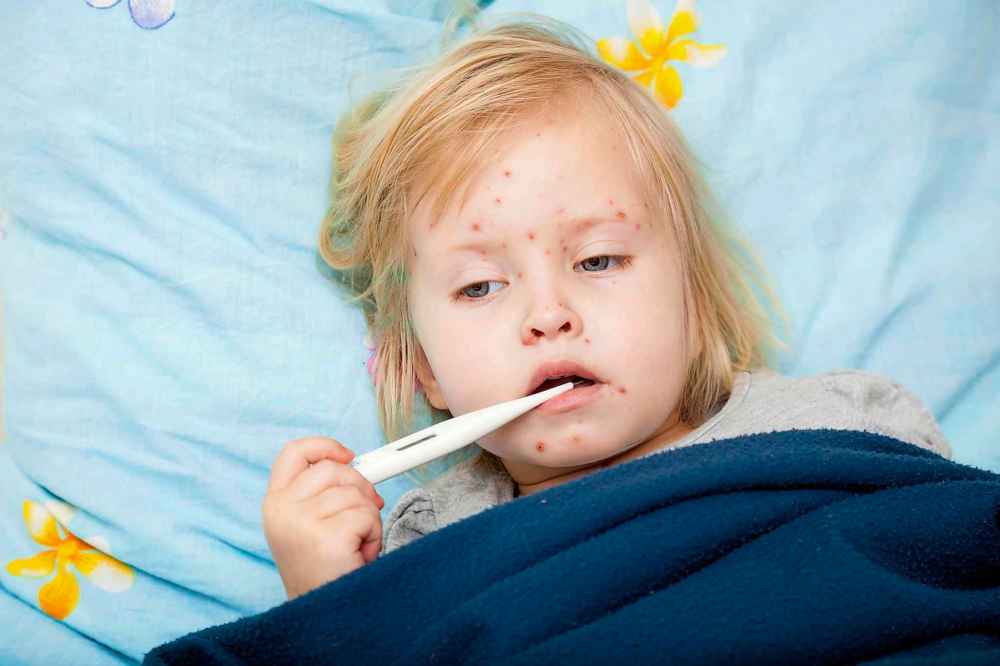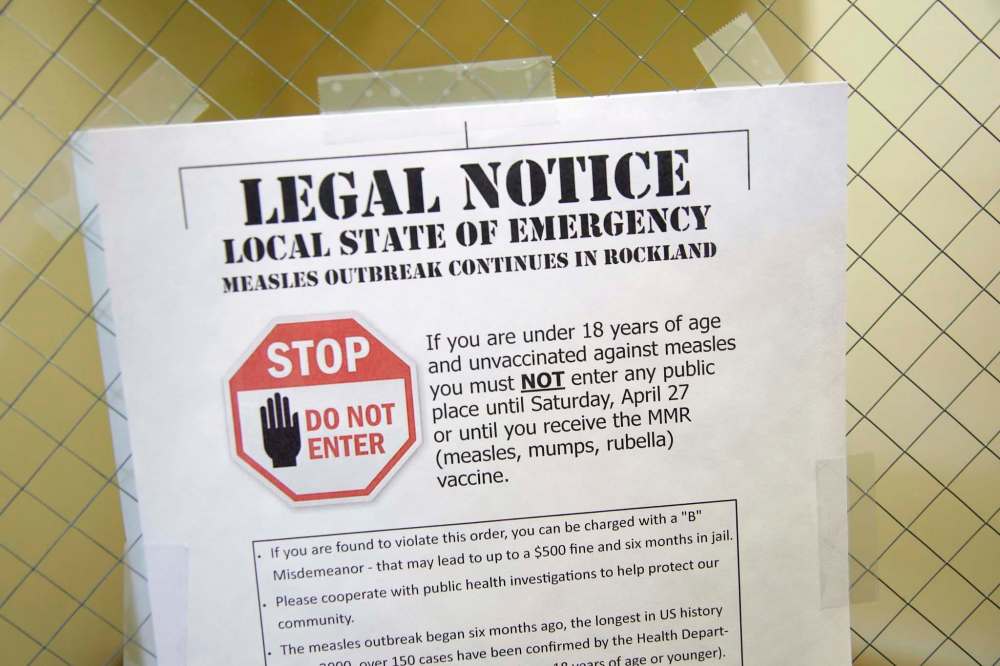Personal vaccination choices have far-reaching implications
Read this article for free:
or
Already have an account? Log in here »
To continue reading, please subscribe:
Monthly Digital Subscription
$0 for the first 4 weeks*
- Enjoy unlimited reading on winnipegfreepress.com
- Read the E-Edition, our digital replica newspaper
- Access News Break, our award-winning app
- Play interactive puzzles
*No charge for 4 weeks then price increases to the regular rate of $19.00 plus GST every four weeks. Offer available to new and qualified returning subscribers only. Cancel any time.
Monthly Digital Subscription
$4.75/week*
- Enjoy unlimited reading on winnipegfreepress.com
- Read the E-Edition, our digital replica newspaper
- Access News Break, our award-winning app
- Play interactive puzzles
*Billed as $19 plus GST every four weeks. Cancel any time.
To continue reading, please subscribe:
Add Free Press access to your Brandon Sun subscription for only an additional
$1 for the first 4 weeks*
*Your next subscription payment will increase by $1.00 and you will be charged $16.99 plus GST for four weeks. After four weeks, your payment will increase to $23.99 plus GST every four weeks.
Read unlimited articles for free today:
or
Already have an account? Log in here »
Hey there, time traveller!
This article was published 10/05/2019 (2409 days ago), so information in it may no longer be current.
I may never think of Winnipeg — and some of my fellow Winnipeggers — quite the same again.
Last month, Manitoba Health released data that showed only 67 per cent of children born in 2008 received the recommended two doses of measles vaccine. In Fort Garry and parts of St. Vital, it’s even lower, at 58 and 55 per cent, respectively.
This is below both the provincial average of 73 per cent, and considerably less than the recommended 90 to 95 per cent rate necessary to achieve the desired "herd immunity" that is necessary to effectively eradicate a highly contagious disease.

In the wake of the publication of that data, it seemed that everyone was talking about measles vaccination. That’s not hard to understand; similar low-vaccination trends have led to significant measles outbreaks all over the world — including in Canada, where Vancouver Island, Montreal and Ottawa have joined the ranks of affected communities.
Thankfully, Winnipeg has yet to join that list — there have been only a few confirmed cases in recent years — but health officials warn that with our alarmingly low rates of vaccination, we could certainly see an outbreak at almost any time.
Even with data showing that my city has low rates of vaccination, and that my neighbourhood is adjacent to two areas that have dangerously low rates of coverage, this is a hard story for most of us to personalize. When everyone in your family has been vaccinated (we double-checked, just to make sure), it’s easy to feel that there is no immediate threat. But then two things happened.
First, I learned from idle neighborhood gossip the identities of a handful of families who had chosen not to vaccinate their children. The mere discovery of that information was a disquieting experience because I have found that once you hear it, it changes the way you think about people.More than 110,000 people, mostly young children, died from measles in 2017.
Only once have I participated in a longer debate about the anti-vaxxer movement with someone I knew well. Emboldened by a constant flow of dangerously erroneous online information, this person was convinced that vaccines cause autism and often lead to death. She was convinced it was a conspiracy involving government and pharmaceutical companies. And she was completely certain that someone in her family had been fatally harmed by a vaccine.
#g-measles-box .g-artboard {
margin:0 auto;
}
#g-measles-box .g-artboard p {
margin:0;
}
.g-aiAbs {
position:absolute;
}
.g-aiImg {
display:block;
width:100% !important;
}
.g-aiSymbol {
position: absolute;
box-sizing: border-box;
}
.g-aiPointText p { white-space: nowrap; }
#g-measles-artboard-200 {
position:relative;
overflow:hidden;
}
#g-measles-artboard-200 p {
font-family:Open Sans,sans-serif;
font-weight:400;
font-size:10px;
line-height:12px;
filter:alpha(opacity=100);
-ms-filter:progid:DXImageTransform.Microsoft.Alpha(Opacity=100);
opacity:1;
letter-spacing:0em;
text-align:left;
color:rgb(0,0,0);
text-transform:none;
padding-bottom:0;
padding-top:0;
mix-blend-mode:normal;
font-style:normal;
height:auto;
}
#g-measles-artboard-200 .g-pstyle0 {
font-weight:700;
font-size:16px;
line-height:19px;
}
#g-measles-artboard-200 .g-pstyle1 {
font-size:16px;
line-height:19px;
}
#g-measles-artboard-200 .g-pstyle2 {
font-size:12px;
line-height:10px;
text-align:center;
}
#g-measles-artboard-200 .g-pstyle3 {
font-weight:700;
font-size:12px;
line-height:14px;
}
#g-measles-artboard-200 .g-pstyle4 {
font-weight:700;
font-size:12px;
line-height:14px;
text-align:right;
}
#g-measles-artboard-200 .g-pstyle5 {
line-height:14px;
}
#g-measles-artboard-400 {
position:relative;
overflow:hidden;
}
#g-measles-artboard-400 p {
font-family:Open Sans,sans-serif;
font-weight:400;
font-size:10px;
line-height:12px;
filter:alpha(opacity=100);
-ms-filter:progid:DXImageTransform.Microsoft.Alpha(Opacity=100);
opacity:1;
letter-spacing:0em;
text-align:left;
color:rgb(0,0,0);
text-transform:none;
padding-bottom:0;
padding-top:0;
mix-blend-mode:normal;
font-style:normal;
height:auto;
}
#g-measles-artboard-400 .g-pstyle0 {
font-weight:700;
font-size:16px;
line-height:19px;
}
#g-measles-artboard-400 .g-pstyle1 {
font-size:16px;
line-height:19px;
}
#g-measles-artboard-400 .g-pstyle2 {
font-size:12px;
line-height:19px;
text-align:center;
}
#g-measles-artboard-400 .g-pstyle3 {
font-weight:700;
font-size:16px;
line-height:19px;
text-align:right;
}
#g-measles-artboard-400 .g-pstyle4 {
line-height:14px;
}
#g-measles-artboard-650 {
position:relative;
overflow:hidden;
}
#g-measles-artboard-650 p {
font-family:Open Sans,sans-serif;
font-weight:400;
font-size:12px;
line-height:14px;
filter:alpha(opacity=100);
-ms-filter:progid:DXImageTransform.Microsoft.Alpha(Opacity=100);
opacity:1;
letter-spacing:0em;
text-align:left;
color:rgb(0,0,0);
text-transform:none;
padding-bottom:0;
padding-top:0;
mix-blend-mode:normal;
font-style:normal;
height:auto;
}
#g-measles-artboard-650 .g-pstyle0 {
font-weight:700;
font-size:16px;
line-height:19px;
}
#g-measles-artboard-650 .g-pstyle1 {
font-size:16px;
line-height:19px;
}
#g-measles-artboard-650 .g-pstyle2 {
text-align:center;
}
#g-measles-artboard-650 .g-pstyle3 {
font-weight:700;
font-size:16px;
line-height:19px;
text-align:right;
}
#g-measles-artboard-650 .g-pstyle4 {
font-size:10px;
}

Measles vaccination rates
Percentage of 2008 birth cohort receiving 2 of 2 doses
0 %
50
60
70
80
100
Seven Oaks
Inkster
Transcona
St. James
Downtown
Assiniboine South
St. Vital
St. Vital North
55%
Fort Garry South
58%
Source: Winnipeg Regional Health Authority

Measles vaccination rates
Percentage of 2008 birth cohort receiving 2 of 2 doses
0 %
50
60
70
80
100
Seven Oaks
Inkster
Transcona
St. James
Downtown
Assiniboine South
St. Vital
St. Vital North
55%
Fort Garry South
58%
Source: Winnipeg Regional Health Authority

Seven Oaks
Inkster
Measles vaccination rates
Percentage of 2008 birth cohort receiving 2 of 2 doses
Transcona
St. James
Downtown
Assiniboine South
0 %
50
60
70
80
100
St. Vital
St. Vital North
55%
Fort Garry South
58%
Source: Winnipeg Regional Health Authority
No matter how many times I tried to walk her through the history of the issue and the incontrovertible evidence that vaccines are not dangerous, she would not be dissuaded. I saw this friend regularly for several more years but our relationship was never the same. I have my fingers crossed that I do not have to engage in any similar debates with other people I know.
The second thing that happened was reading a recent article in the New York Times describing the impact of a serious measles outbreak on parents of children who are too young to be properly vaccinated. The stories contained in that article were chilling, to say the least.
The Times piece opened with the story of a mother in Troy, Mich. — the site of a major measles outbreak — who recounted her growing anxiety about taking her five-month-old daughter anywhere in public. She talked about how she could no longer run mundane errands without "freaking out" about the possibility that her young daughter’s still-developing immune system would be overrun by measles.
Another woman who works in suburan Detroit recounted how, after a day at work, she would not even pick up her baby until she had vigorously scrubbed her hands and changed out of her work clothes.

Acknowledging that many of the people who choose deliberately to avoid vaccinations often describe it as a personal choice, one mother from San Francisco who has an eight-week-old baby courageously spoke the ultimate truth. "It’s not a choice for me, because my baby cannot be vaccinated," she told the Times. "The folks who are choosing not to vaccinate their children or be vaccinated themselves are putting my child in danger."
At first blush, you might accuse these mothers of overreacting to the measles threat. However, to put these stories into proper perspective, let’s consider the nature and current impact of measles, and the irrefutable facts about vaccines.
Doctors warn that the measles virus, which lives in the nose and throat mucus of an infected person, is so virulent it can live in the air of a confined space for up to two hours after a carrier has coughed or sneezed. Although virtually eradicated by the year 2000 through the use of vaccinations, measles has made a vengeful comeback thanks to the anti-vax movement: more than 110,000 people, mostly young children, died from measles in 2017.
Simply put, this is one extremely dangerous, extremely nasty virus.
Now on to the truth about vaccines. There is no scientific evidence to support the idea that vaccines are, in and of themselves, harmful. They do not cause autism. One flawed 1998 study that tried to link vaccines and autism has since been soundly denounced and disproven. Meanwhile, the World Health Organization estimates that nearly 10 million lives worldwide were saved by vaccines in the last decade alone.
Health officials believe only a very small percentage of those people who do not vaccinate their children are militant anti-vaxxers. It’s more likely that people are lazy, or just generally uncomfortable about the idea of vaccinating their kids because they are surrounded by so much dangerously misguided information. And there are others for whom the decision is faith-based.
For those in the final category, let’s be completely clear: although some of the base formulations for vaccines do contain substances that are by religious definition objectionable to some, the world’s leading Jewish and Islamic scholars, along with the Vatican, have unequivocally declared vaccines to be acceptable within the confines of their faiths.
Which brings us all the way back to Canada and places like Winnipeg, where through ignorance or unbridled fear, or a misinterpretation of the tenets of their faith, parents are not vaccinating their children. These parents should know that they are not only threatening the lives of their own children, they are also posing a danger to other children too young to be vaccinated.
They should also know the threat they pose to society will, at some point, provoke a rather harsh response from government.
Ontario and New Brunswick already require proof of vaccination for admission to public schools. British Columbia doesn’t go that far, but it does require disclosure of vaccine status. Likely because we have not seen a measles outbreak yet, Manitoba has no policies in place to require children to be vaccinated.There is no scientific evidence to support the idea that vaccines are, in and of themselves, harmful. They do not cause autism. One flawed 1998 study that tried to link vaccines and autism has since been soundly denounced and disproven.
Health officials and physicians’ groups are still debating the ethics of mandatory vaccinations, but it’s clear that this and other provinces without any measures in place are likely just one major outbreak away from taking a firmer approach.
Misguided anti-vaxxers and misinformed libertarians may continue to argue that it is their choice to forgo vaccinations. But in making that choice, they will also be choosing a future in which they may be ostracized, segregated and shamed because the threat they pose is greater than any principle of personal choice.
When I think about how that future is going to affect the people I know who have chosen not to vaccinate their children, I have only one piece of advice: please reconsider your choice.
dan.lett@freepress.mb.ca



Born and raised in and around Toronto, Dan Lett came to Winnipeg in 1986, less than a year out of journalism school with a lifelong dream to be a newspaper reporter.
Our newsroom depends on a growing audience of readers to power our journalism. If you are not a paid reader, please consider becoming a subscriber.
Our newsroom depends on its audience of readers to power our journalism. Thank you for your support.
History
Updated on Saturday, May 11, 2019 9:47 AM CDT: Removed second "per cent" from second paragraph











